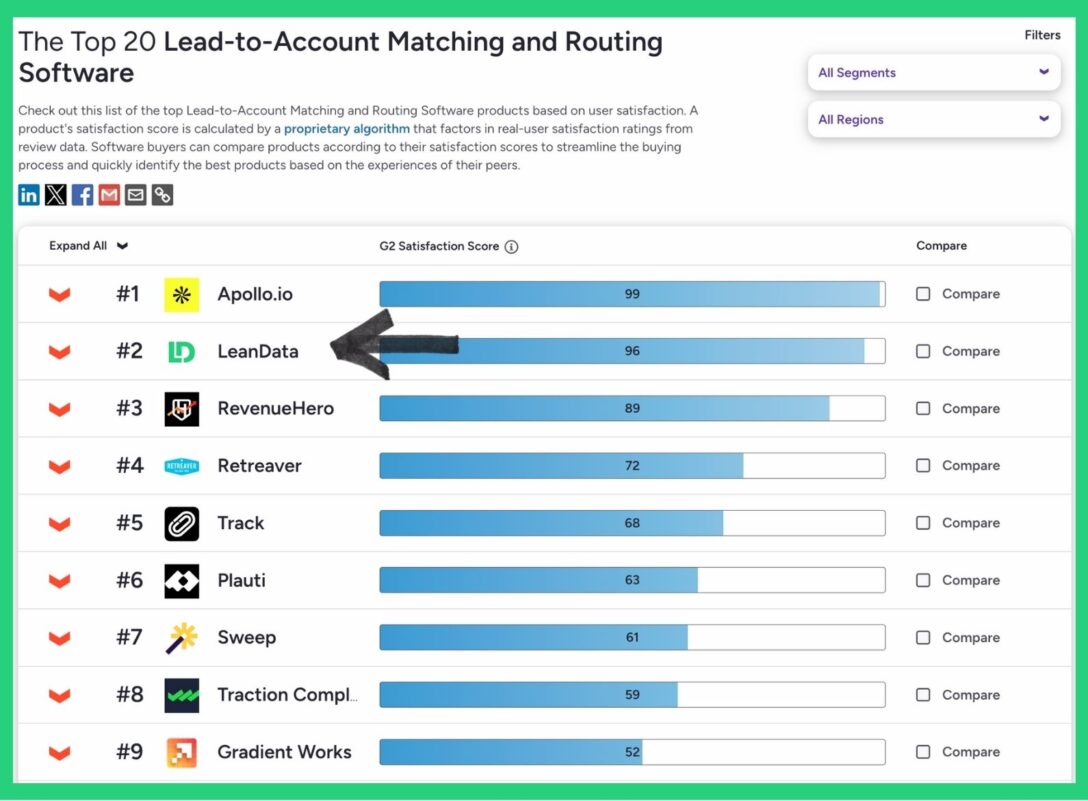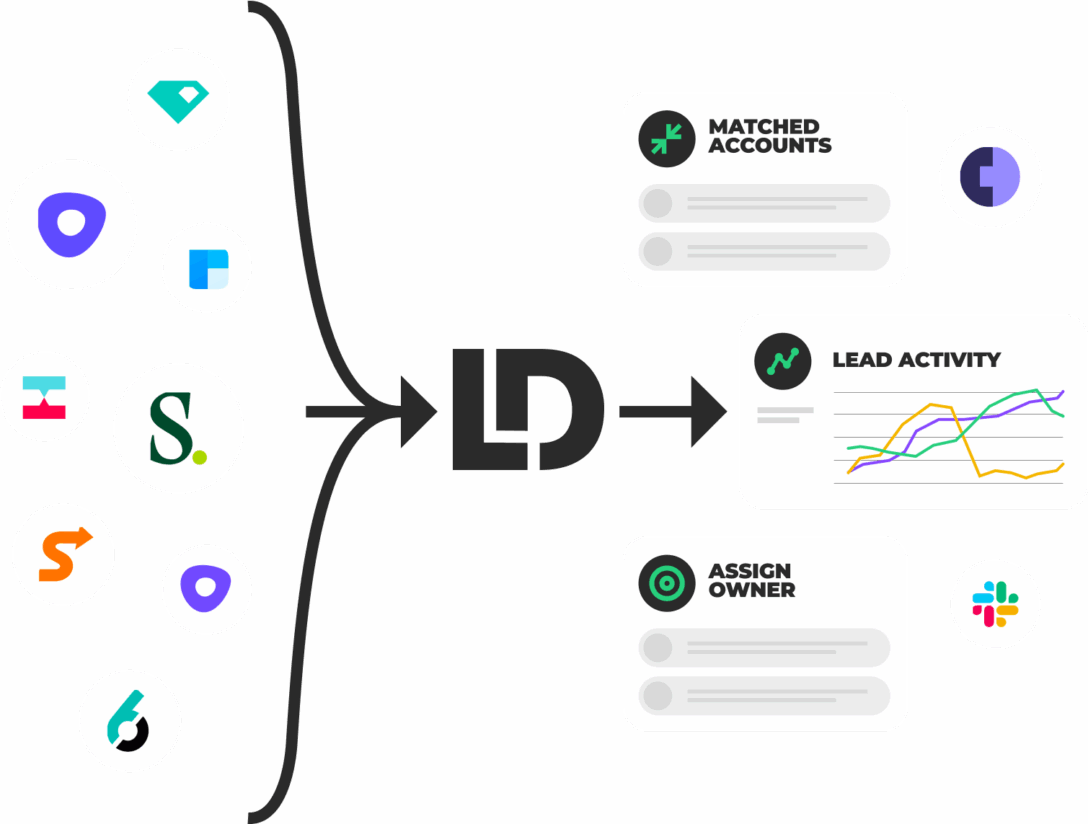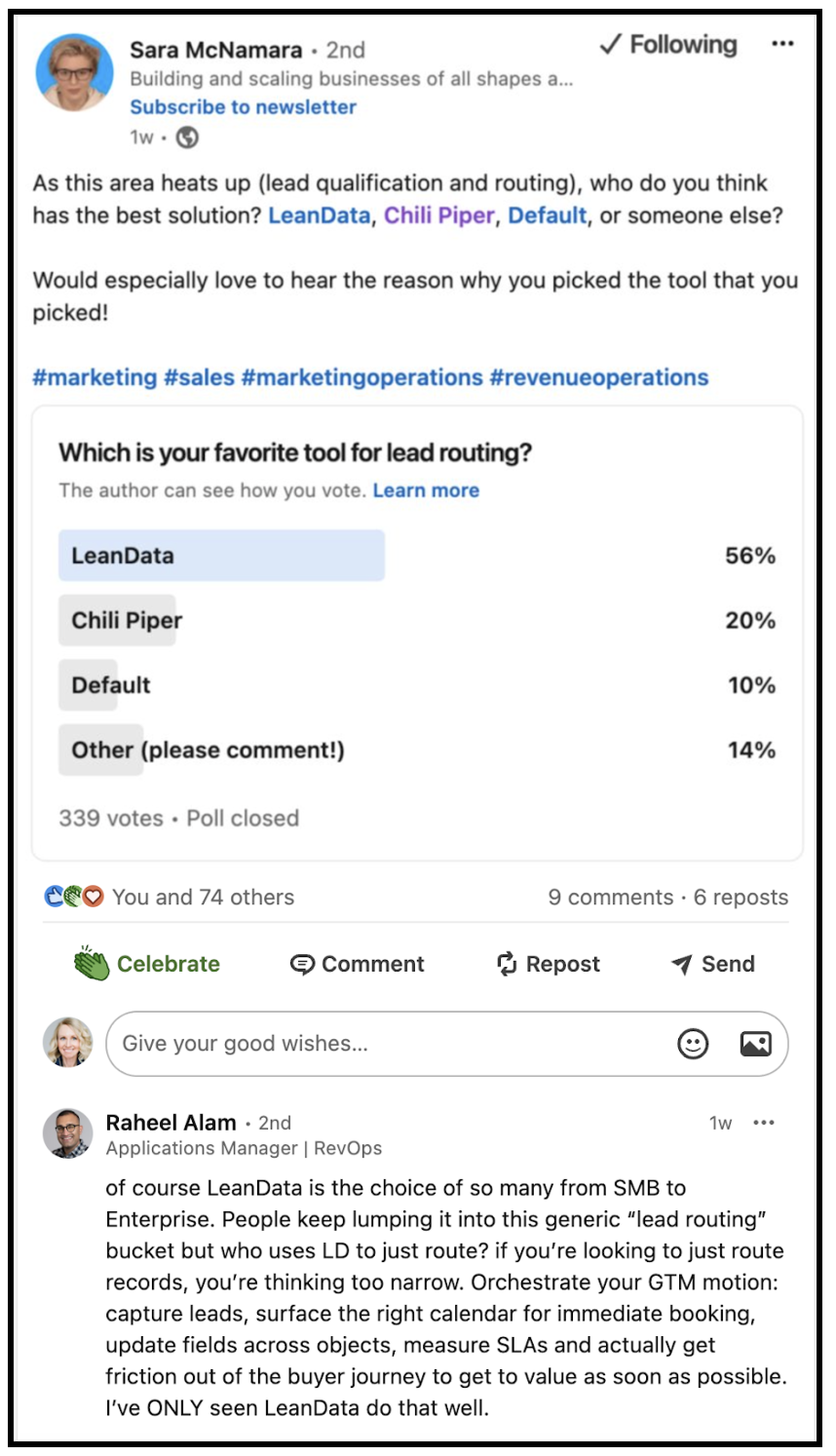Summary
Choosing the right go-to-market automation technology is a critical decision that impacts your entire revenue engine. This guide provides a balanced comparison of LeanData and Traction Complete, focusing on their core capabilities in lead-to-account matching and routing, data handling, and scalability to help you make an informed choice.
Key Takeaways
- Understand the architectural differences between a purpose-built platform and a solution based on native Salesforce automation.
- Compare how each tool approaches data matching and its impact on accuracy and manual effort.
- Evaluate the flexibility of each platform’s routing and workflow capabilities for complex GTM motions.
- Consider the role of integrations and how they affect your team’s productivity and tech stack alignment.
- Assess the total cost of ownership, including potential hidden costs like consulting and performance limitations.
A Guide to Lead-to-Account Matching and Routing: LeanData vs. Traction Complete
Disconnected systems and inconsistent handoffs create friction in your go-to-market execution. When you’re evaluating automation tools to solve this, the stakes are high.
Your choice directly influences how efficiently your teams can act on buyer signals and deliver a connected customer experience.
Two prominent players in the Salesforce ecosystem are LeanData and Traction Complete. Understanding their distinct approaches is essential for making the right investment.
Both platforms aim to automate processes and improve data quality within your CRM.
However, they are built on different foundations. Traction Complete leverages native Salesforce functionality, like its standard flows and duplicate rules, to enhance automation.
Conversely, LeanData is a purpose-built platform with its own orchestration engine designed to manage complex workflows.
This article provides a helpful comparison to guide your evaluation process.

Comparing Lead-to-Account Matching and Routing
First, let’s examine the core function of connecting leads to accounts. The accuracy of your matching logic determines whether your sales team engages the right person at the right company with the right context.
Traction Complete
- Foundation: Relies on Salesforce’s standard matching and deduplication rules to find and link records.
- Best For: Businesses whose needs are met by this native functionality. It can be an effective enhancement for simpler matching requirements.
- Limitations: If your organization requires more sophisticated matching criteria beyond what Salesforce offers, you may find this approach limiting.
LeanData
- Foundation: Utilizes its own proprietary matching engine that is independent of Salesforce limitations.
- Best For: Organizations that need to map complex buying signals with a high degree of accuracy.
- Functionality: LeanData uses AI-enhanced fuzzy logic across multiple fields to identify relationships between objects, even when data is imperfect. The goal is to provide a more reliable data foundation from the start, which reduces the need for manual data cleanup down the line.
“LeanData is much better than standard Salesforce routing. It’s visually easy for most to understand and use, and allows for us to do some really complex matching.”Dean Rosenberg
Flexibility in Workflow and Process Orchestration
Next, consider how each tool handles workflow automation. Modern GTM strategies often involve complex logic, including time-based routing, SLA tracking, territory management, and routing for entire buying groups.
Traction Complete
- Framework: Built on Salesforce Flows, its capabilities are tied to what the native platform can support.
- Use Cases: Simpler, more linear processes are a good fit.
- Challenges: Executing advanced GTM motions may require extensive manual configuration and creative workarounds within the Salesforce environment. Consequently, complex, multi-threaded workflows can present a challenge.
LeanData
- Framework: Provides a no-code, visual workflow builder that operates independently of Salesforce’s automation limits.
- Use Cases: Allows operations teams to design, test, and deploy complex processes without needing developer resources.
- Benefits: Teams can adapt their GTM strategies quickly as business needs change. For instance, processes that might take months to code can often be built and modified in hours.
“LeanData’s solution to speed to lead is industry best! I’ve tried many vendors for lead-to-account matching so we can cleanup and stand up ABM processes, but LeanData’s algorithm is the best. You can also use this tool for lead, contact, account and case matching so you can configure your GTM process and make sure you route your prospects to the right person all the time.”Chrislyn M.
Integrations and Tech Stack Alignment
Your automation platform should act as the connective tissue for your entire revenue technology stack. Seamless integrations are vital for team productivity and creating a unified buyer experience.
Both LeanData and Traction Complete integrate with Salesforce. However, LeanData also offers a broad set of pre-built integrations with popular sales engagement platforms, data enrichment tools, and ABM solutions.
The LeanData platform is designed to serve as a central orchestration hub, triggering actions in other systems based on signals within your CRM.

When evaluating Traction Complete, it’s important to assess its integration capabilities against your current and future tech stack. Consider which tools are essential for your GTM motion and verify that the platform can support them to avoid creating data or process silos.

Scalability and Total Cost of Ownership
Finally, think about long-term scalability and the true cost of each solution. As your business grows, your processes and GTM strategy will inevitably become more complex.
Traction Complete
- Pricing Model: Often appeals to budget-conscious buyers with an attractive initial price point.
- Potential Hidden Costs: Some customers have cited the need for ongoing paid consulting services to bridge functionality gaps or manage complex configurations. Plus, performance limitations tied to Salesforce governor limits and job queues can become a factor at scale.
LeanData
- Pricing Model: With four pricing tiers, LeanData is designed to grow with you as you move from foundation to full-funnel orchestration, no matter your stage.
- Value: LeanData focuses on providing a reliable, flexible architecture that can handle high volumes and complex logic without performance degradation. While the initial investment may be higher, the platform aims to deliver a lower total cost of ownership by empowering teams with self-service tools, reducing the need for costly developer work, and minimizing revenue leakage from bad data or misrouted leads.
Making the Right Choice for Your Business
Ultimately, the best choice between LeanData and Traction Complete depends on your company’s specific needs and long-term vision.
- Choose Traction Complete if: Your organization has relatively straightforward routing needs and operates effectively within the guardrails of native Salesforce automation. It can be a solid choice to enhance your current processes.
- Choose LeanData if: Your GTM strategy involves complex logic, requires deep integration with a diverse tech stack, and needs to scale with a growing business. It offers the flexibility and power to manage sophisticated processes and adapt quickly to market changes.












